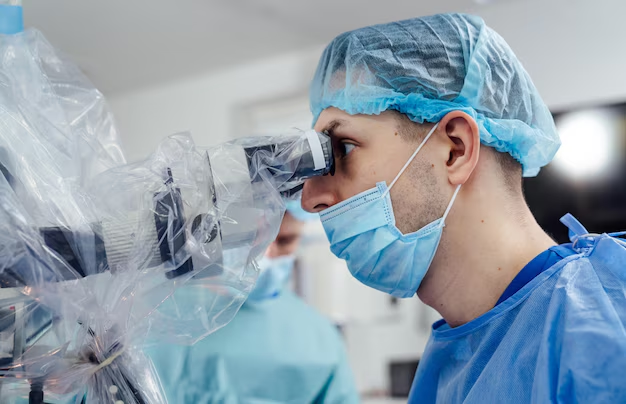What to Expect During Cataract Surgery: Timing and Process Explained
Cataract surgery is one of the most common and effective surgical procedures worldwide, offering high success rates and restoring vision for countless patients every day. If you or a loved one is considering this procedure, you’re probably wondering: how long does it take to do cataract surgery? While the surgery itself is relatively quick, there are several factors to consider in understanding the entire process. Let's dive into the details and explore related subtopics that will help paint a comprehensive picture of what to expect.
⏰ The Length of Cataract Surgery: An Overview
The Surgical Procedure
Cataract surgery typically takes about 10 to 20 minutes. The procedure primarily involves the removal of the clouded lens and replacement with a clear artificial lens. It's usually performed on an outpatient basis, meaning patients can go home the same day.
Pre-Operative Considerations
Before the actual surgery, patients spend time in pre-operative steps such as:
- Medical Assessments: A full ocular examination and general health check.
- Discussion with the Surgeon: Going over the procedure, expectations, and possible risks.
- Dilation: The pupil needs to be dilated; this can add about 20 to 30 minutes.
Post-Operative Recovery Time
After the surgery, expect to spend approximately 30 minutes to an hour in a recovery area where the medical team will monitor your initial recovery before you are cleared to go home.
💤 Anesthesia and Comfort Measures
Types of Anesthesia Used
Cataract surgery usually involves local anesthesia to numb the eye. This could be in the form of eye drops or an injection. Sedatives may also be given to help the patient relax.
Patient Comfort
Patients generally remain awake and comfortable throughout the procedure, experiencing no pain but possibly feeling slight pressure.
🩺 Pre-Surgery Preparations
Evaluations and Measurements
Before surgery, your eye care professional will perform essential evaluations:
- Eye Measurement: To determine the proper lens implant size.
- Health Check: Ensuring no contraindications to the surgery.
Important Instructions
Following specific instructions is crucial for a successful procedure:
- Medication Adjustments: You might be asked to stop medications that increase bleeding risk.
- Fasting: Refrain from eating or drinking for a few hours before the surgery.
🔄 Recovery: From Surgery Day to Full Restoration
Immediate Recovery
Post-surgery, you’ll need someone to drive you home as your vision might be blurry. Mild discomfort, itchiness, and light sensitivity are normal during the first few days.
Long-Term Recovery
Full recovery generally spans a few weeks:
- Vision Stabilization: Expect gradual improvement.
- Follow-up Visits: Regular check-ups to monitor healing and address any concerns.
Tips for Smooth Recovery
- Use prescribed eye drops to prevent infection and reduce inflammation.
- Avoid strenuous activities and keep water out of the eye.
- Follow medical advice regarding the use of glasses or protective shields.
🤔 Related Considerations: Safety and Risks
Surgical Risks
While cataract surgery is safe, every procedure carries some risks:
- Infection
- Bleeding
- Vision issues (like glare or halos)
Success and Satisfaction
Most patients experience significant vision improvement after surgery, enhancing their quality of life.
👀 Lens Choices and Their Impact
Types of Intraocular Lenses (IOLs)
Several lens types can be used during cataract surgery:
- Monofocal Lenses: Standard lenses focused at a single distance.
- Multifocal Lenses: Offering vision correction for near, intermediate, and far distances.
- Toric Lenses: Specially designed to correct astigmatism.
Making the Right Lens Choice
Lens selection depends on individual vision needs, lifestyle, and financial considerations. Discussing options with your surgeon can help make an informed choice.
📋 Summary: Key Points for Cataract Surgery Patients
Here’s a quick rundown of important takeaways for those considering cataract surgery:
- ⏰ Surgery Duration: Takes about 10 to 20 minutes.
- 🩺 Pre-Surgical Steps: Includes assessments and pupil dilation.
- 💤 Anesthesia: Local anesthesia with a sedation option.
- 🔄 Recovery: Initial recovery is quick; full vision recovery takes weeks.
- 👀 Lens Options: Choose based on lifestyle needs and surgeon’s advice.
In conclusion, cataract surgery is a well-established procedure with a robust track record of improving sight and enhancing life quality for many. While the actual surgical time is brief, the process includes essential pre- and post-operative steps to ensure optimal outcomes. By understanding the entire journey from preparation to recovery, patients can approach their surgery with confidence and clarity.
